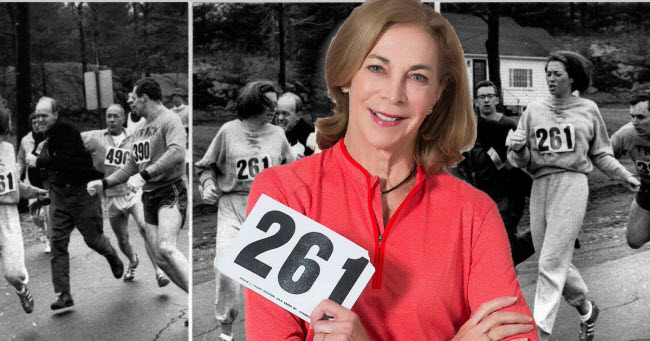Despite the United States’ self-proclaimed values of equality, the reality on the ground often diverged sharply from these ideals. There was a clear racial divide between whites and blacks, prompting many to form civil rights movements advocating for equality and the rejection of racism. This discrimination extended beyond racial lines to include women, who, since the country’s inception, were barred from political participation, whether holding office or voting. Similarly, women were excluded from many sports events, including the famous Boston Marathon. However, a woman named Kathrine Switzer changed the narrative by challenging these barriers and participating in the marathon, overcoming significant obstacles in the process.
Born in Germany in 1947 to an American military family, Kathrine Switzer was known as an active and athletic young woman. She attended Syracuse University in New York to study journalism and developed a passion for running. During this time, she trained informally with a men’s cross-country team, as there were no women’s teams available. She met her coach, Arnie Briggs, a seasoned Boston Marathon runner, who shared stories of the marathon that fascinated her. Kathrine expressed a desire to participate in the marathon, but Arnie initially discouraged her, claiming that no woman could run the Boston Marathon due to its difficulty. This challenge ignited Kathrine’s determination to prove him wrong. Arnie agreed that if she could demonstrate her ability during training, he would take her to the marathon himself.

Kathrine managed to run 31 miles in training, which excited Arnie about her potential participation in the Boston Marathon. After reviewing the marathon’s rules and finding no prohibition against female runners, Kathrine filled out an entry form, paid the $3 fee, and signed it with her initials, believing this would lead race officials to assume she was male. Arnie secured travel tickets and mailed the entry forms. Two weeks later, her friend Tom Miller, a former American football player and hammer thrower, announced he would also run the Boston Marathon, claiming that if a girl could do it, he could as well, thus forming a team for the event.
Despite being a woman, Kathrine was accepted into the marathon due to her initials on the registration form, which race officials mistook as a male name. On April 19, 1967, the day of the marathon, Kathrine, along with Tom and Arnie, began the race. As they started, Kathrine was met with surprise looks from other runners as she applied makeup. When the race began, Kathrine and her team started covering the initial miles. By the fourth mile, photographers were excited to capture the historic moment of a woman running in the marathon.

However, race officials soon noticed Kathrine’s presence and tried to stop her. One official, John Semple, attempted to physically remove her from the race, grabbing her shoulder and demanding she leave. Kathrine tried to evade him, but only managed to do so with the help of Arnie and Tom, who confronted and subdued Semple, causing a commotion. Kathrine feared for their safety and worried they might be arrested, but Semple continued to threaten them with future problems. Despite the ordeal, Kathrine decided to continue running, feeling that stopping would significantly impact women’s sports and demonstrate that women could complete the marathon. She finished the Boston Marathon with a time of four hours and twenty minutes.


The prevailing argument against women running the Boston Marathon was that they were too weak to complete the 26.2-mile race. Kathrine’s successful completion disproved this belief. Despite this achievement, the Amateur Athletic Union banned all women from competing with male runners. Kathrine and other women’s rights advocates campaigned to change these rules, but it wasn’t until 1972 that women were officially allowed to run the Boston Marathon. In 1974, Kathrine won first place among women and finished 59th overall with a time of three hours, seven minutes, and twenty-nine seconds.
Kathrine Switzer later founded the 261 Fearless Running Club, named after her original marathon number, aimed at empowering and inspiring female runners worldwide. She says the club and the support from fellow runners have been a source of strength for her and them. She recounts how, when she attends the Boston Marathon today, women cry tears of joy on her shoulder, grateful for how running has changed their lives and made them feel capable of anything.

In recognition of her contributions, Kathrine Switzer was inducted into the National Women’s Hall of Fame in 2011 for her undeniable impact on advancing and empowering women through running. In 2017, she ran the Boston Marathon again, this time with the number 261 registered in her full name, to celebrate the 50th anniversary of her historic run. After the race, the Boston Athletic Association announced that it would retire the number 261 in her honor, recognizing Kathrine Switzer’s lasting legacy.
